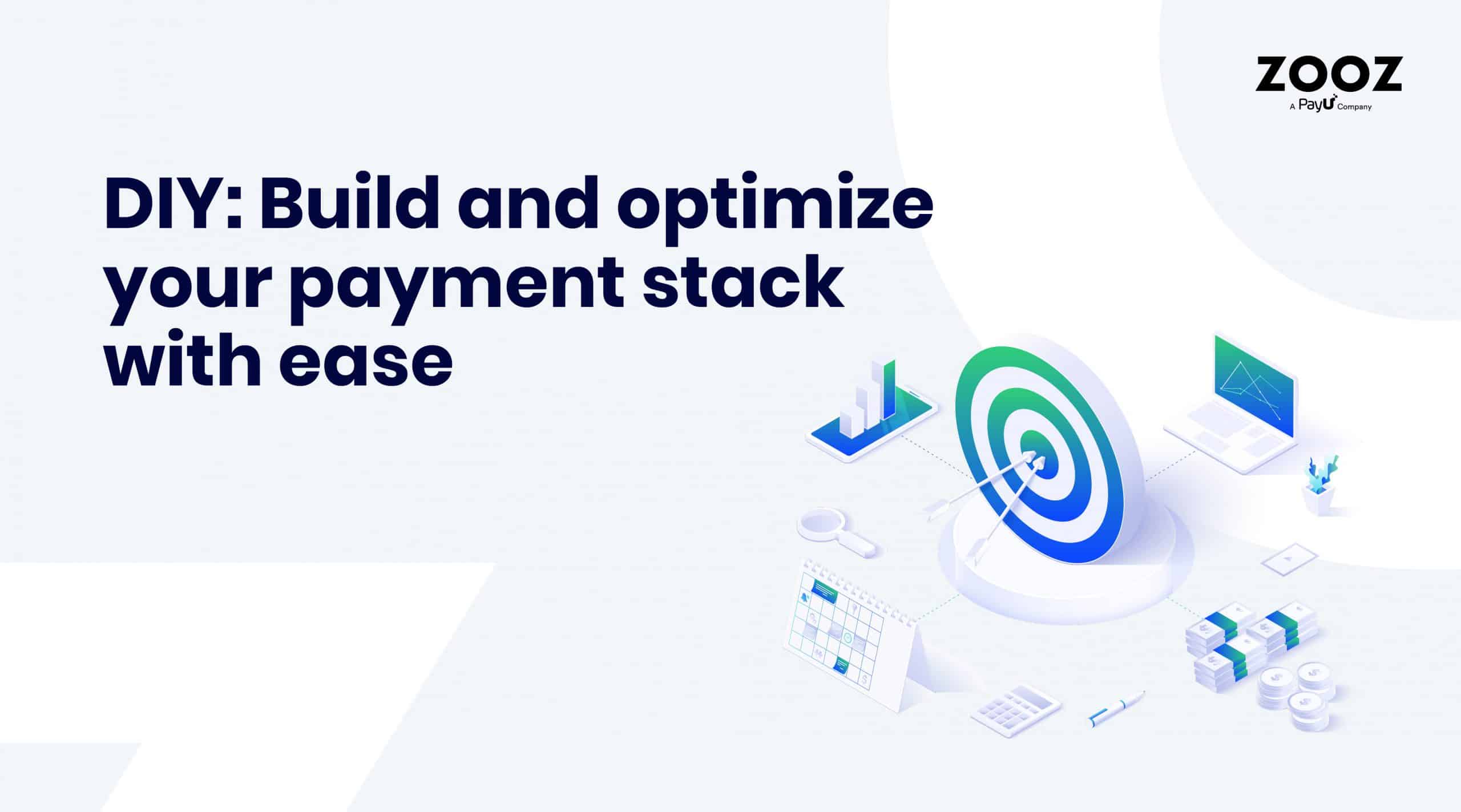DIY: Build and optimize your payment stack with ease
A well-designed payment stack is made to generate more money for your business. Who wouldn’t want that? But as it turns out, this concept is a bit more complex to implement in practice. As we’ve covered in recent articles, choosing a POL (payment orchestration layer) for your business is not as easy and straightforward as it may sound. First, the market is filled with different options, and while some overlapping exists between solutions, they still differ from each other and there’s not a single solution that can offer a one-stop-shop experience. On top of that, there’s the ongoing division between open vs. closed payment solutions, each with their characteristics and pros and cons, which make the decision-making even more complex. Is there a middle way? Can you get a top-notch optimization mechanism (associated with open payment solutions) with the simplicity which usually defines closed payment solutions? and moreover – can you actually do it by yourself?
Open vs. Closed
It’s important to stop for a moment and redefine what open and closed payment solutions are. At their simplest, open solutions allow you – the merchant – to have full control on how you route your payments and to which payment provider(s). Closed solutions won’t allow you to have that freedom of choice, but they will take the responsibility off of you by making automated routing decisions according to their own logic/algorithms. It is, therefore, a battle between tailored payment routing (with maximum payment optimization) of open solutions vs. the ‘plug-and-play’ benefit of closed solutions.
The key components of optimization
Optimization is a process of maximizing performance and generating the highest output by investing the smallest input (e.g. minimal man-hours, money, or a combination of the two). In the payment world, optimization becomes an essential key for growth and to maximize a business’s ROI. We see the following four components as important catalysts to payment optimization:
- Improved customer experience
- Data-based decision making
- Efficiency (minimum effort, maximal efficiency, better ROI)
- High approval rates (i.e. more successful payments)
How to get there
Improved customer experience
Customer experience and satisfaction are important factors that help to reduce cart abandonment and make sure payments are finalized once the user gets to the checkout process. This is an elusive process that often ends in cart abandonment. Merchants need to do everything in their power to maximize the probability of payment fulfilment. To do that, they need to offer their customers multiple payment options to pay with, a secure, easy and straightforward interface, and added tools on their side (the merchant’s) to increase the probability that transactions will be authorized (more on that is coming up next).
Data-based decision making
Payment routing and optimization should be done smartly. Payments differ in geographical areas, methods (credit cards, eWallets, etc.) and additional factors, which affect the probability of certain payments to be more or less successful when sent via one PSP or another. Optimization is achieved by tweaking and making changes to an existing stack according to its ongoing performance. So solutions need to enable data extraction to allow merchants to change their payment stack accordingly – i.e. to reflect the data. The chart below shows the a general division of the recorded use of payment methods in 2019. The rise in the use of eWallets is definitly a force to be reckoned with. Merchants need to be on top of their game and be aware of changes in payment trends etc.
Efficiency (minimum effort, maximal efficiency, better ROI)
Every business aims to eventually invest as little resources as possible while getting the best ROI in return. So a payment solution should be easy to operate (without added development), and has to reflect the results of the actions performed in it immediately. Check the video below demonstrating how easy rule-setting can be. Merchants can continuously tweak and optimize their rule-logic according to the data and reports they receive from the system. The easy rule-setting mechanism requires only minimal technical knowledge and allows payment teams to immediately make changes to reflect the results they see in real-time.
High approval rates
Approval rates are affected by multiple factors – sometimes it’s a matter of one PSP that has a better transaction approval rate in certain locations or with certain payment methods, while sometimes transactions can be flagged as fraudulent (whether they are indeed fraudulent or not). To eliminate or reduce these difficulties, merchants can devise their routing rules according to their business logic. To reduce unnecessary fraud flagging, merchants need to comply with PSD2 and other mandates so that they could verify the buyer beforehand. This is also something that a POL can help with, as POLs need to comply with regulations as well.
How POPs help you to optimize
All of the four components we’ve mentioned above should be implementable and streamlined via one place – and that’s where POLs come in. Many businesses wish to avoid – and very rightfully so – the need to add more work and programming on their side to such solutions. Often-times, the payment personal doesn’t have an engineering background and since they are the main users of these solutions, the solutions should be a perfect fit for their needs and easy to operate.
We’ve mentioned before the classifications of payment solutions to closed and open. Many businesses opt for closed solutions because they are seemingly easier to operate and fuss-free. The caveat is again the lack of manual optimization options so the results are sub-optimal to what they can and should aim to. Open solutions might require more attention, but they offer far greater optimization options, which in the greater scope of things, can serve your business objectives much better.
Easy optimization, DIY style
Is there a middle way? Can you overcome complexity and the need to invest many man-hours of development and monitoring and still get a perfectly customizable solution to give you the utmost optimization?
The answer is yes – some solutions do offer a very straightforward platforms that eliminates the complexity and at the same time allows you to control and devise your business rules quickly and efficiently – without the need to invest further money and man-hours in development. That way, you can benefit from the control and adaptability of an open solution with an ease which is usually associated with closed solutions. At ZOOZ, that was (and still is) one of our core guidelines when we designed our solution: simplicity, greater control and adaptability. Specifically designed for payment teams, the solutions is both extremely straightforward and self-explanatory, while at the same time offers very high-end capabilities of routing, data-analyzing and optimization. You can dive in and open a quick (and free) demo account to get the look and feel of our solution for yourself. As mentioned above, the core pillars of optimization in payments usually revolve around customer experience, data-based decision making, efficiency and high approval rates. Eventually – and due to the nature of the payment ecosystem – solutions need to be flexible enough to allow tweaks and changes to support these core pillars. Optimization therefore is very much associated with the DIY approach of open payment platforms, and that should be taken into account when devising a payment strategy. Eventually optimization requires control from your side, and cannot be done without a certain amount of supervision, but that also doesn’t mean that controlling your own system should be overly complicated.
Stay informed with all of the latest industry news and updates by signing up for our newsletter.




